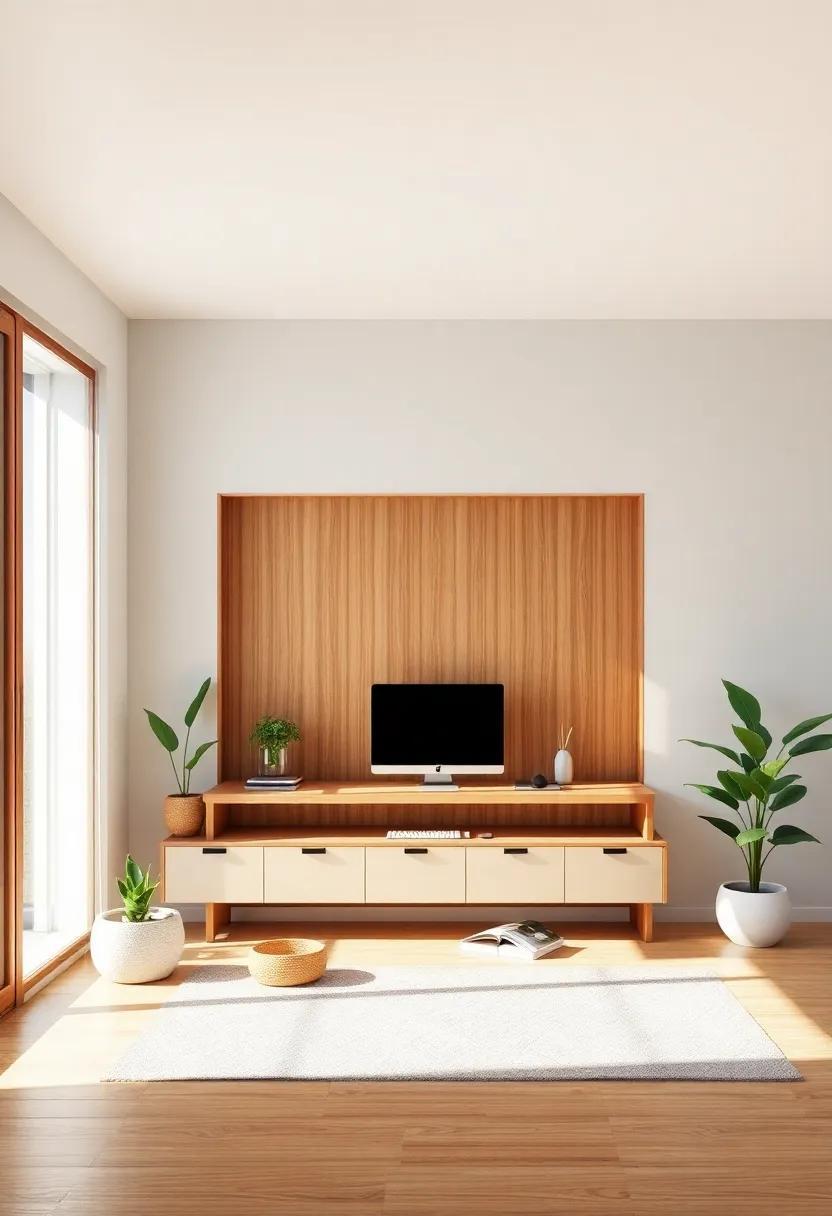
Creating a Tranquil Workspace: The Art of Zen Home Office Design
in an era where the lines between home and work blur, the importance of cultivating a serene and inspiring workspace cannot be overstated. Welcome to the world of Zen home office design—where tranquility meets productivity in perfect harmony. As we navigate through the challenges of remote work, creating an environment that fosters focus, creativity, and calm has become a vital necessity. This article invites you to embark on a journey to transform your home office into a sanctuary of peace, blending the principles of minimalist aesthetics with thoughtful institution and intentional decor.Discover how to harness the art of Zen to craft a workspace that not only enhances your workflow but also nourishes your spirit, allowing you to thrive in both your professional and personal life.
Creating an Inviting Atmosphere with Natural Light in Your Home Office
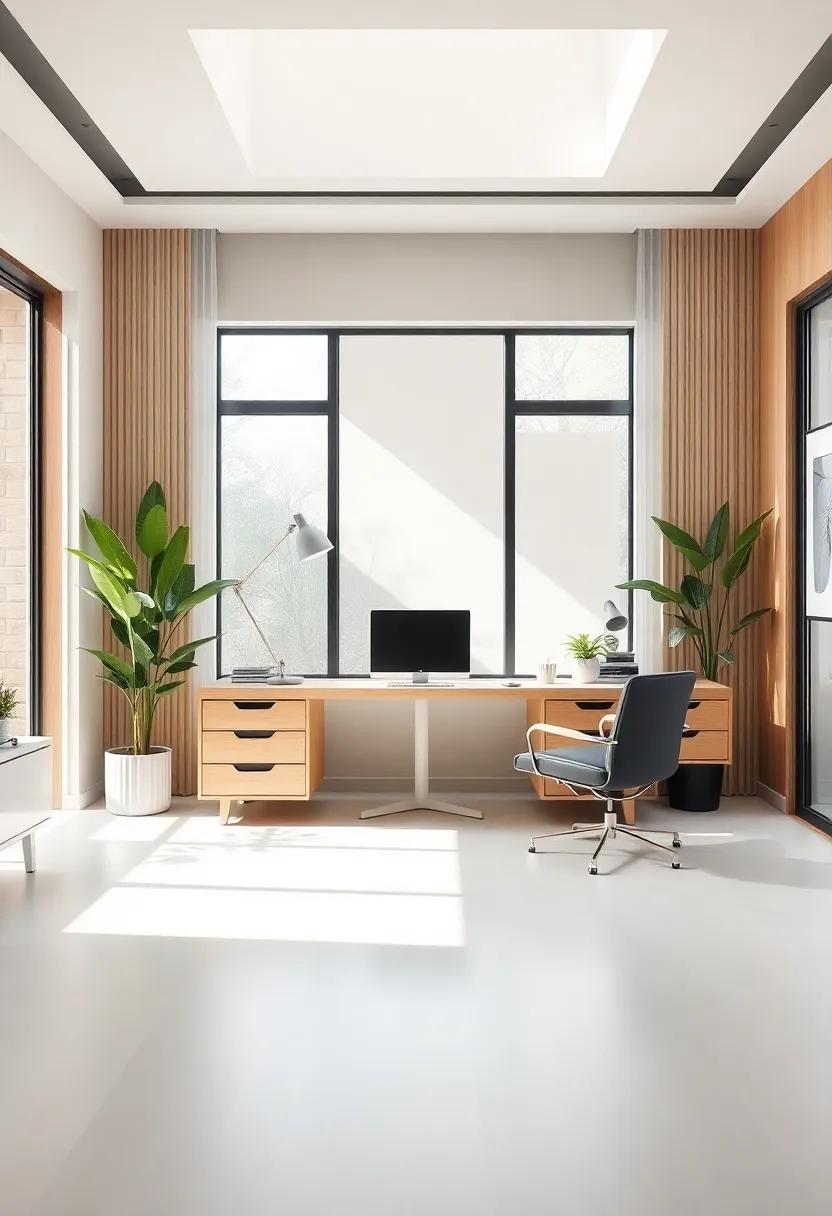
Embracing natural light in your home office not only enhances the aesthetic appeal but also significantly boosts your productivity and mood.Positioning your desk near windows allows for maximum sunlight to flow into your workspace, creating an uplifting atmosphere. Consider the following tips to harvest the benefits of daylight:
- Window Treatments: Use sheer curtains to diffuse harsh sunlight while still allowing light to penetrate.
- Reflective Surfaces: Incorporate mirrors or light-colored furniture to bounce light around the room.
- Outdoor Views: Position your desk to face a window with a pleasant view, inviting the scenery into your workspace.
To maintain a constantly bright environment, think about the time of day you work, as the position of the sun will change.If your workspace faces north, you can benefit from steady, indirect light throughout the day. Conversely, if you have a southern exposure, consider how to manage the intensity of sunlight during peak hours to avoid glare on screens. Below is a swift reference table highlighting the best orientations for natural light:
| Orientation | Light Quality | Best Time for use |
|---|---|---|
| North | Soft & Diffused | All Day |
| South | Bright & Direct | Midday |
| East | Warm Morning Light | Morning |
| West | Warm Afternoon Light | Afternoon |
Integrating natural light effectively can create a serene and productive workspace that not only inspires creativity but also promotes well-being. For more inspiration on optimizing your workspace, visit thebalanceeveryday.com.
Selecting Soothing Color Palettes to Foster Calm and Focus
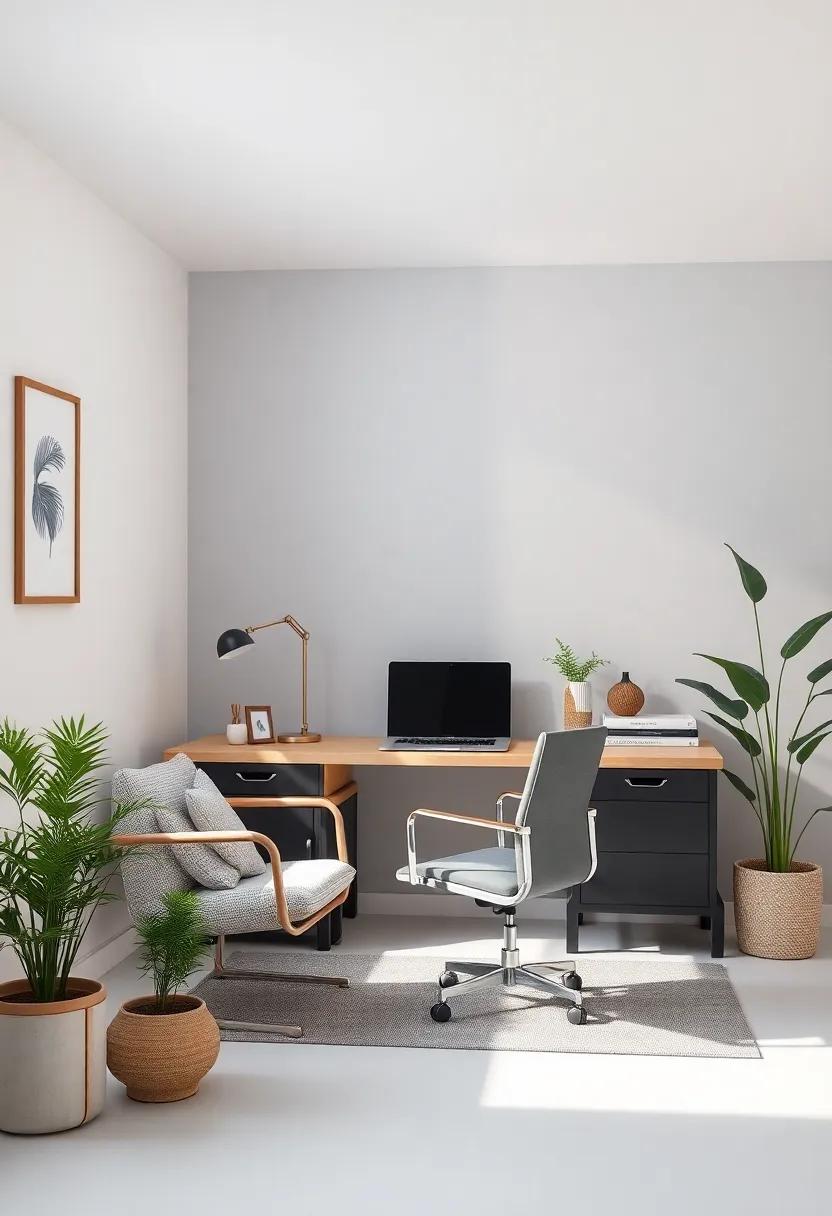
When curating a color palette for your workspace,it’s essential to choose hues that evoke tranquility and promote focus. soft shades of blue and green are especially effective, as they are known to have calming effects on the mind. Incorporating these tones into your office can be done through wall paints,furniture,or even decorative accents. For a well-rounded palette, consider mixing in:
- Muted pastels: Such as soft pinks and yellows that add warmth and coziness.
- Earth tones: Like gentle browns and beiges that ground the space.
- Grays: Light grays can bring a modern touch while remaining soothing.
Pairing these colors with natural materials can further enhance the serene atmosphere. A light-colored wooden desk or plant pots in complementary shades can harmonize beautifully with your chosen palette. To illustrate how these elements can come together,here’s a simple table to visualize a potential color scheme:
| Color | Effect |
|---|---|
| Soft Blue | Promotes tranquility and reduces anxiety |
| Pale green | Encourages balance and fosters concentration |
| Soft White | Enhances light and creates a spacious feel |
For more ideas on color psychology and its impact on your environment,visit Color Psychology.
Incorporating Indoor Plants for Freshness and Serenity in Your workspace
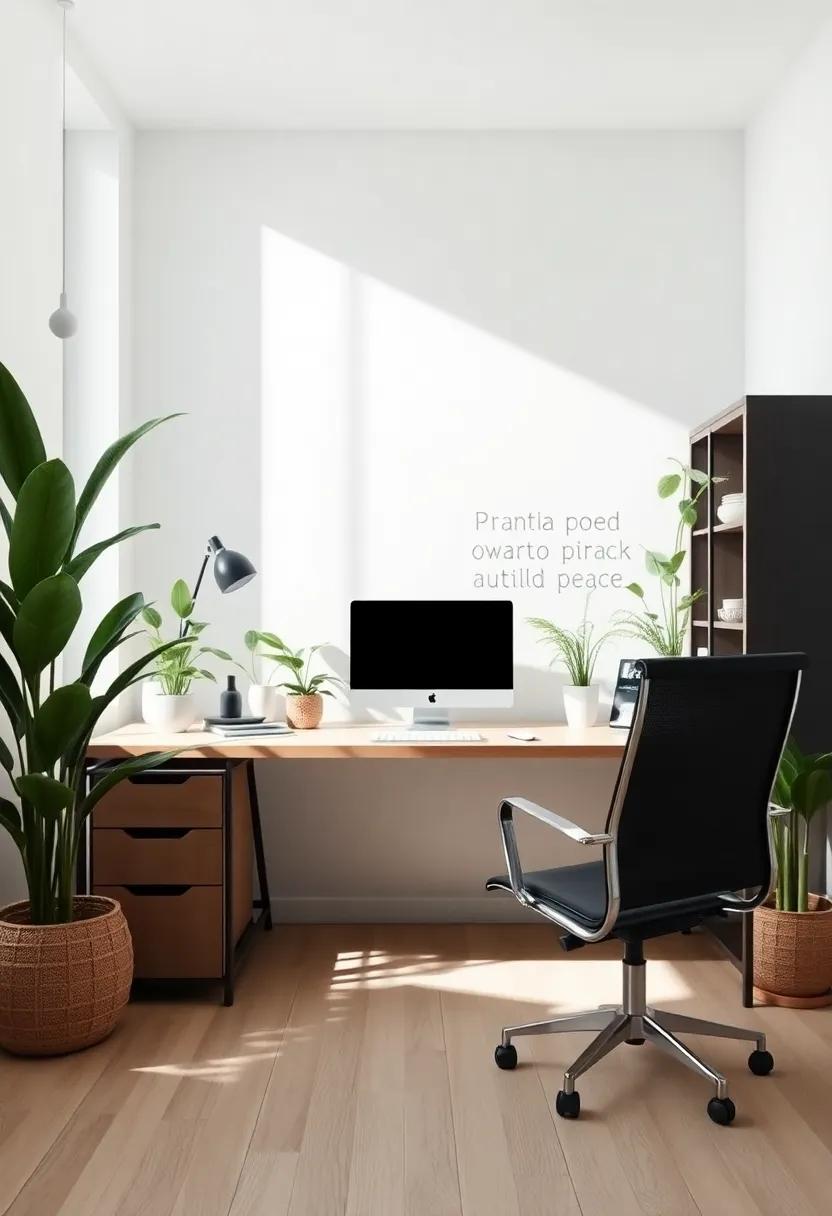
Transforming your workspace into an oasis of calm and creativity is as simple as introducing a selection of indoor plants. These green companions not only enhance the aesthetic appeal of your office but also purify the air, providing you with fresher surroundings.Consider plants such as snake plants, pothos, or peace lilies, each known for their low maintenance and air-purifying qualities. Placing these plants on your desk, bookshelf, or near windows can create a vibrant atmosphere, making tedious work hours more pleasant and inspiring.
Furthermore, it’s essential to select pots and planters that align with the overall design of your workspace. Look for textures and colors that complement your existing decor. Ceramic pots, as an example, bring a touch of elegance, while wooden planters can infuse warmth into the environment. Create a harmonious arrangement by grouping plants of varying heights and leaf types to maintain visual interest. For more tips on indoor plants and their benefits, visit The Sill to explore an array of options that suit both your style and wellbeing.
The Role of Minimalist Furniture in Cultivating a Calm Environment
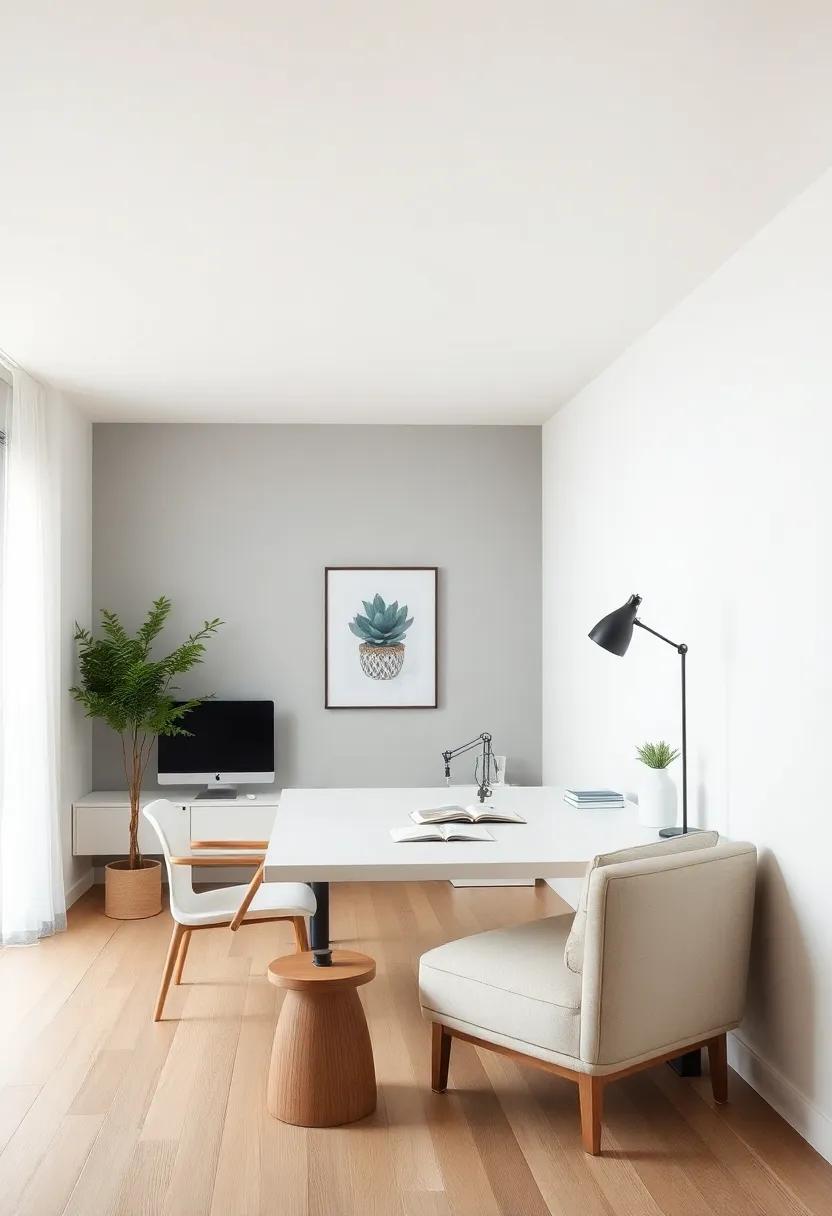
In today’s fast-paced world, creating a serene workspace is essential for maintaining focus and enhancing creativity. Minimalist furniture plays a pivotal role in fostering a calm atmosphere, free from the distractions typically associated with cluttered spaces. By choosing pieces that emphasize simplicity and functionality, one can cultivate an environment that promotes productivity and tranquility. Key characteristics of minimalist furniture include:
- Clean Lines: Smooth edges and unembellished designs evoke a sense of order.
- neutral Colors: Soft tones like whites,grays,and earthy hues help to soothe the mind.
- Multi-functionality: Each piece serves a purpose, reducing unnecessary items in the workspace.
This thoughtful approach to furniture selection creates a cohesive space where distractions are minimized. Strategic placement is equally important; ensure that windows allow natural light to flood the room, enhancing the spacious feel of the minimalist aesthetic.Additionally, incorporating natural elements such as plants or organic materials can elevate the serene ambiance. Consider the following elements to further enhance your tranquil workspace:
| Element | Effect on Environment |
|---|---|
| Plants | Adds life and purifies air. |
| Lighting | Creates warmth and focus, affecting mood. |
| Textiles | Softens the space and adds comfort. |
By merging minimalist furniture with mindful decor, you can craft a workspace that not only looks good but also feels good. To explore more about minimalist design principles and their impact on mental wellness, visit minimalism.com.
Balancing Functionality and Aesthetics in Home Office Design
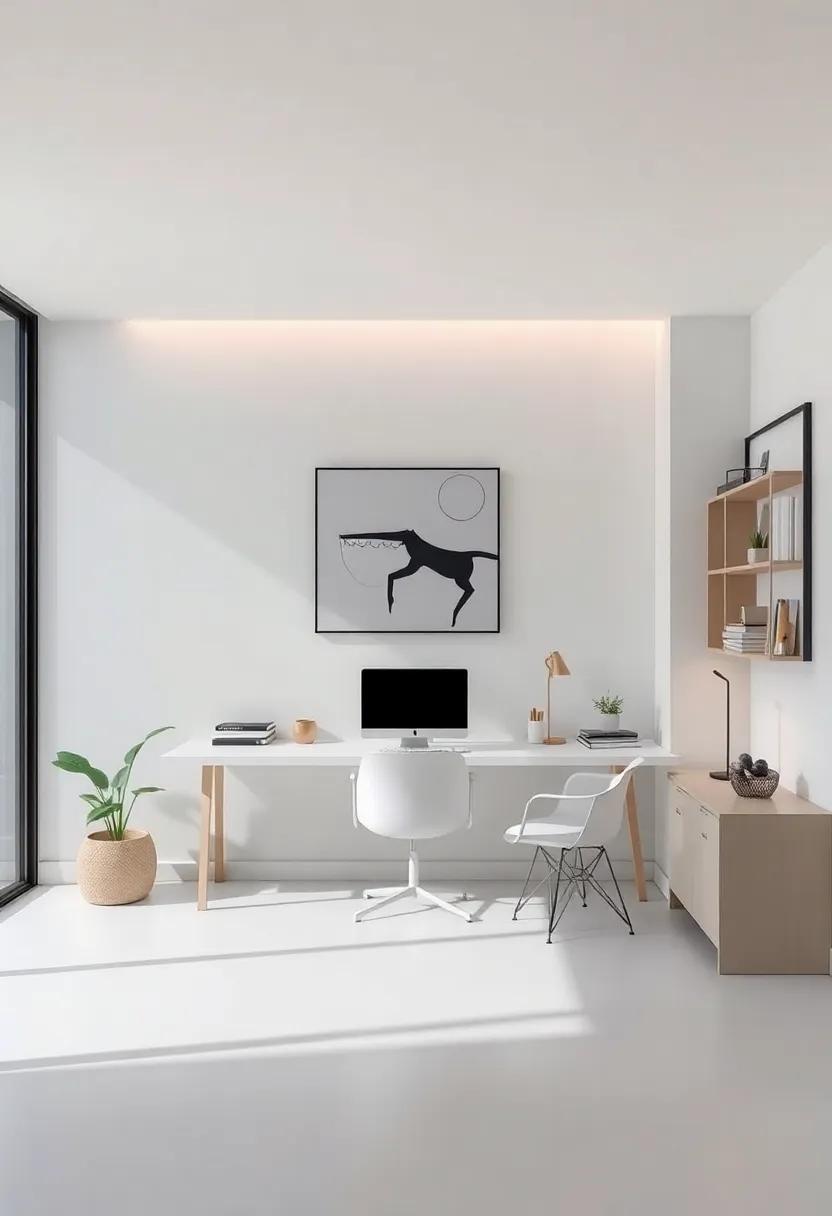
Creating an effective workspace begins with a careful balance between functionality and aesthetics.Each element in your home office should serve a purpose while also contributing to a serene environment.Consider incorporating items that enhance productivity without overwhelming the senses. A streamlined desk with built-in storage can keep clutter at bay, allowing for a calm atmosphere. Choosing ergonomic furniture not only supports your physical well-being but also complements the overall aesthetic with its modern lines and materials.
Along with the physical elements, color palettes and lighting play notable roles in establishing harmony.Soft,neutral tones can evoke a sense of tranquility,while natural elements—like plants or wooden accents—invite warmth and life into the space. Lighting should be both functional and calming; opt for soft ambient light combined with task lighting that emphasizes work areas without creating harsh contrasts.Consider the following elements to achieve a balanced design:
- Natural light: Maximize windows to invite the sun in.
- Textures: Use soft fabrics and sleek wood finishes to create visual interest.
- Decluttered surfaces: Keep desk space open and organized to foster focus.
| Element | Functionality | Aesthetics |
|---|---|---|
| Desk | Storage solutions | Stylish design |
| Chair | Ergonomic support | Modern appeal |
| Lighting | Task-focused | Warm ambiance |
For additional inspiration, explore resources on Houzz to discover innovative approaches to home office design that merge style with purpose.
Crafting a Dedicated Zen Corner for Mindfulness and Relaxation
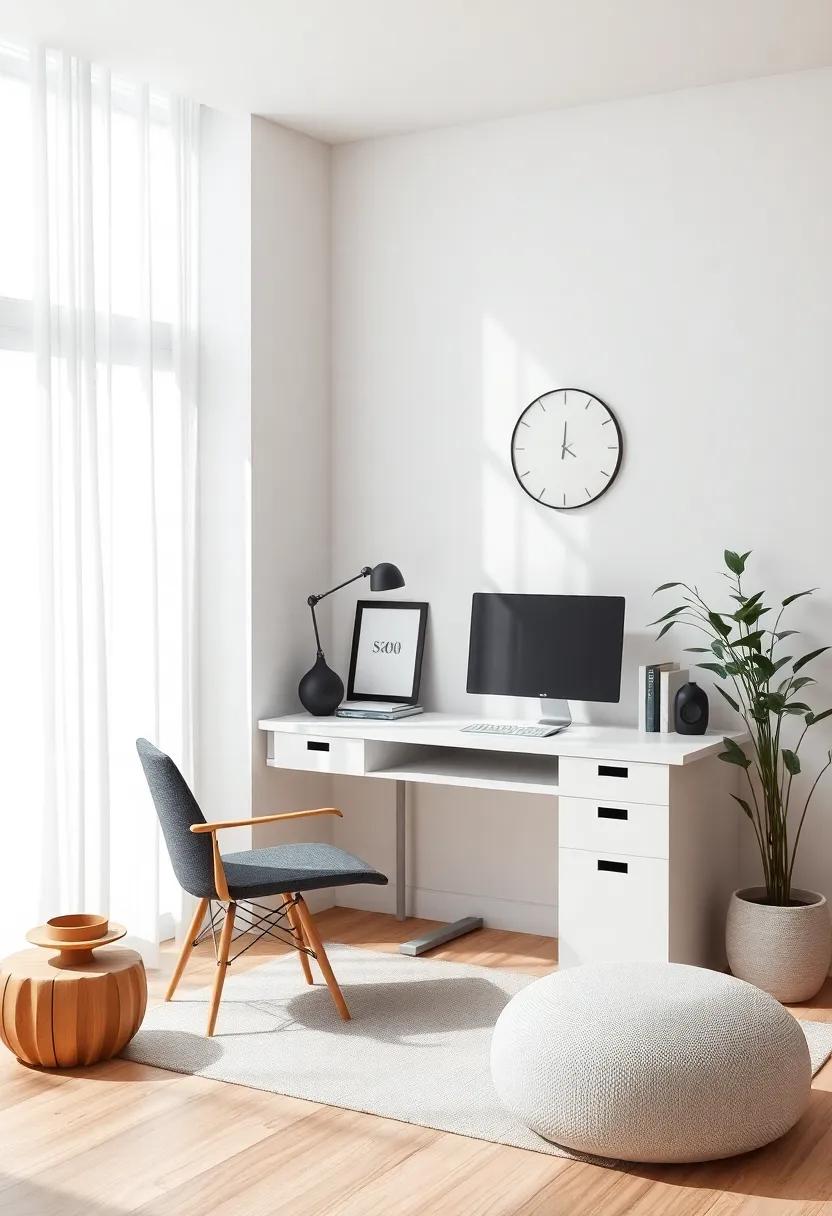
Designing a dedicated zen corner within your workspace can transform your approach to mindfulness and relaxation. this area should inspire serenity while seamlessly fitting into your overall office aesthetic. Begin by choosing a secluded spot filled with natural light, where distractions are minimized. Incorporate elements that promote a calming atmosphere, such as soft cushions, gentle lighting, and plant life. Here are some essential components to consider:
- Cozy seating for meditation or reflection
- Aromatic diffusers to enhance the ambiance
- Sound elements like soothing music or nature sounds
- Inspirational decor featuring quotes or soft imagery
To boost the corner’s tranquility, consider adding a small water feature or a simple table for journaling and mindfulness practices. This space should be a personal retreat, allowing you to disconnect, reflect, and recharge before returning to your tasks. When it comes to color, opt for muted tones that evoke a sense of peace, such as soft greens, blues, and earth tones. Implementing a consistent theme can unify the space; a clean, minimalistic layout promotes focus. for further inspiration on enhancing your mindfulness practice, visit mindful.org.
Using Natural Materials to Enhance the Tranquil Feel of Your Office
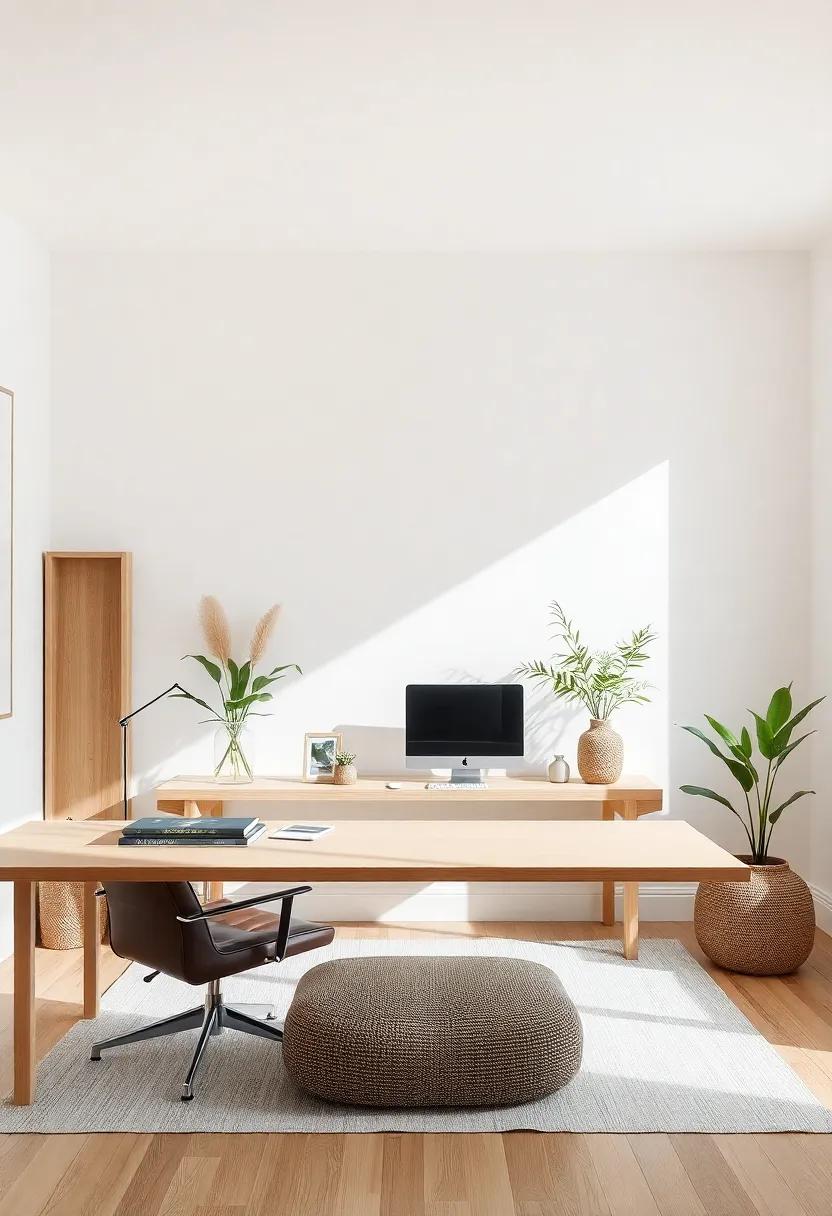
Incorporating natural materials into your workspace can significantly elevate its calming essence, promoting a serene environment conducive to focus and creativity. Materials such as bamboo, cork, and linen can soften the starkness often found in traditional office designs. Consider using bamboo desk organizers, wich not only restore order but also introduce a warm, organic tone. Adding cork pinboards serves dual purposes, allowing you to display important notes while enhancing acoustic absorption, creating a quieter atmosphere for productivity. Linen curtains can diffuse harsh light, casting gentle shadows and creating a soothing ambiance.
Integrating elements from nature can further deepen the tranquil atmosphere of your office. You might include stone accents in the form of a sculpture or paperweight to provide grounding energy. Additionally, a wooden desk can serve as a beautiful anchor for your workspace, radiating warmth and stability. To blend these components harmoniously, strive for balance in your color palette; earthy tones such as deep greens, browns, and soft neutrals work exceptionally well. For more inspiration on natural materials and their benefits in interior design, visit Architectural Digest.
Embracing Technology Without Clutter in a Zen-inspired Workspace
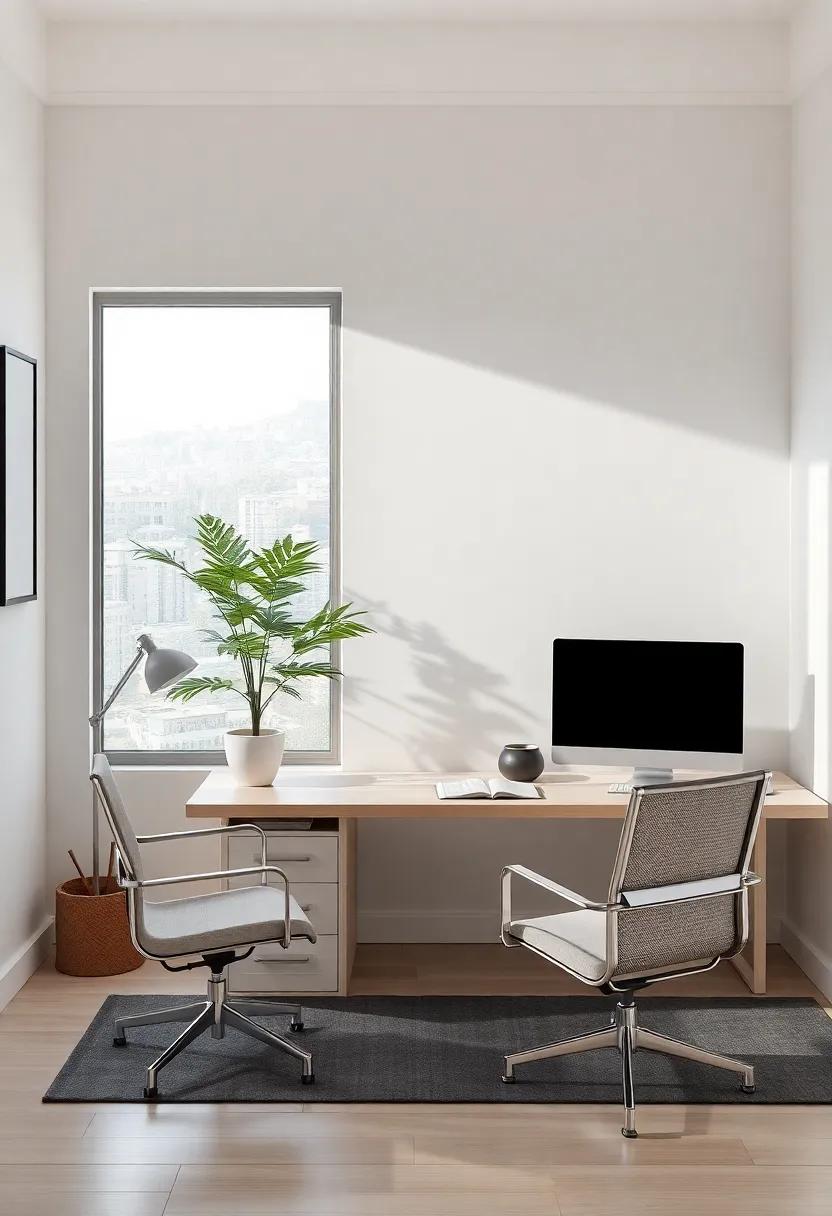
In a world where technology often leads to excess,creating a Zen-inspired workspace requires a thoughtful approach to integrate devices and tools while minimizing visual clutter. Start by selecting multifunctional equipment that aligns with your minimalistic principles, such as a laptop that combines powerful performance with sleek design. Utilize tech tools that offer both efficiency and a zen-like aesthetic, such as a wireless keyboard made from sustainable materials, or a gently glowing desk lamp that provides ambient lighting without harsh glare. Regular digital decluttering, keeping only essential apps and tools on your devices, can also enhance clarity, allowing focus to flow naturally amidst serene surroundings.
Further, consider implementing smart organization solutions for your workspace. Items like a cable management box can conceal unsightly cords, maintaining an open and airy vibe. Arrange your desk with intentional care—embrace the empty space that promotes tranquility by using a small succulent or a stone in your decor. Here’s a quick overview of some recommended organizational items:
| Item | Purpose |
|---|---|
| Cable Management Box | Eliminates tangled wires |
| Blissful Desk Organizer | Holds essential tools without clutter |
| Minimalist Plant Pot | adds life and color |
By integrating these practices, you foster a workspace where technology enhances productivity without overwhelming the senses. Explore more about creating balance with tech at Houzz, where design meets functionality seamlessly.
Designing a Soundscape: Choosing Calming Music and Ambient Sounds
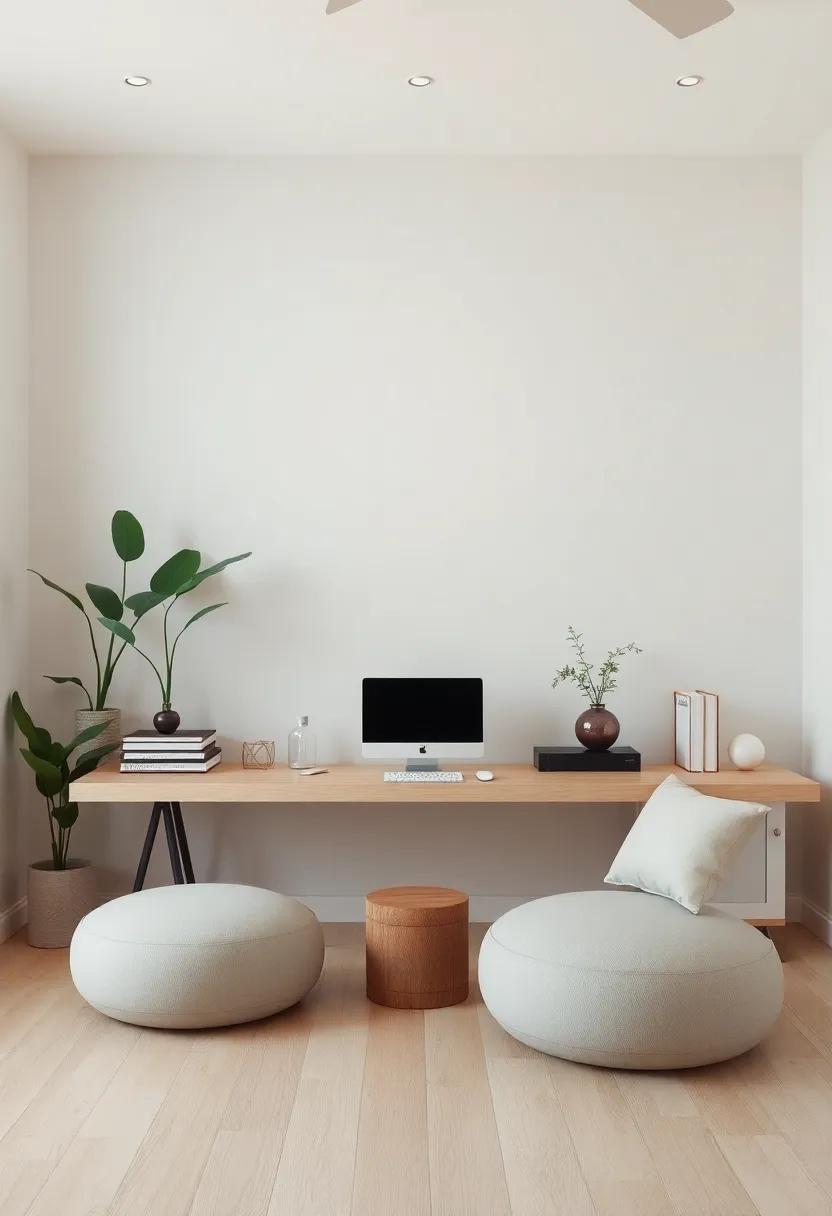
Creating a serene ambiance within your home office can significantly enhance productivity and promote relaxation. When choosing calming music and ambient sounds, consider options that evoke tranquility and focus. Instrumental music, especially soft piano or gentle guitar melodies, can provide a soothing backdrop without being overly distracting. Similarly, nature sounds, such as gentle rain, chirping birds, or ocean waves, can definitely help transport your mind to a peaceful environment. By integrating these elements, you can cultivate a workspace that encourages mindfulness and creativity.
To make your soundscape effective, it’s crucial to explore various platforms that offer the perfect tracks for your needs. Here are some great options to consider:
- Spotify – Browse themed playlists aimed at relaxation and focus.
- YouTube – Search for long-play ambient sounds, from forest life to coffee shop ambiance.
- MyNoise – Customize soundscapes with sliders for an individualized experience.
- Calm - this app features meditation and sleep music perfect for work focus.
Experiment with combining different audio elements to create a sound environment that feels harmonious to you.A mix of light instrumental tracks with soft nature sounds can form a unique auditory palette that helps drown out disruptive noises. Consider keeping a record of your favorites by creating a simple chart to identify which combinations yield the best results for you:
| Track Type | Example | Effect |
|---|---|---|
| Instrumental | Piano solos | Promotes concentration |
| Nature Sounds | Rainfall | Reduces stress |
| White Noise | Fan or AC Sounds | Blocks distractions |
| Chillout Music | Lofi Beats | Enhances creativity |
Remember, the key is to find the right balance that works for you. To dive deeper into the effects of sound on productivity and wellness, explore resources at Healthline.
Personalizing Your Space with Meaningful Art and Decor Elements
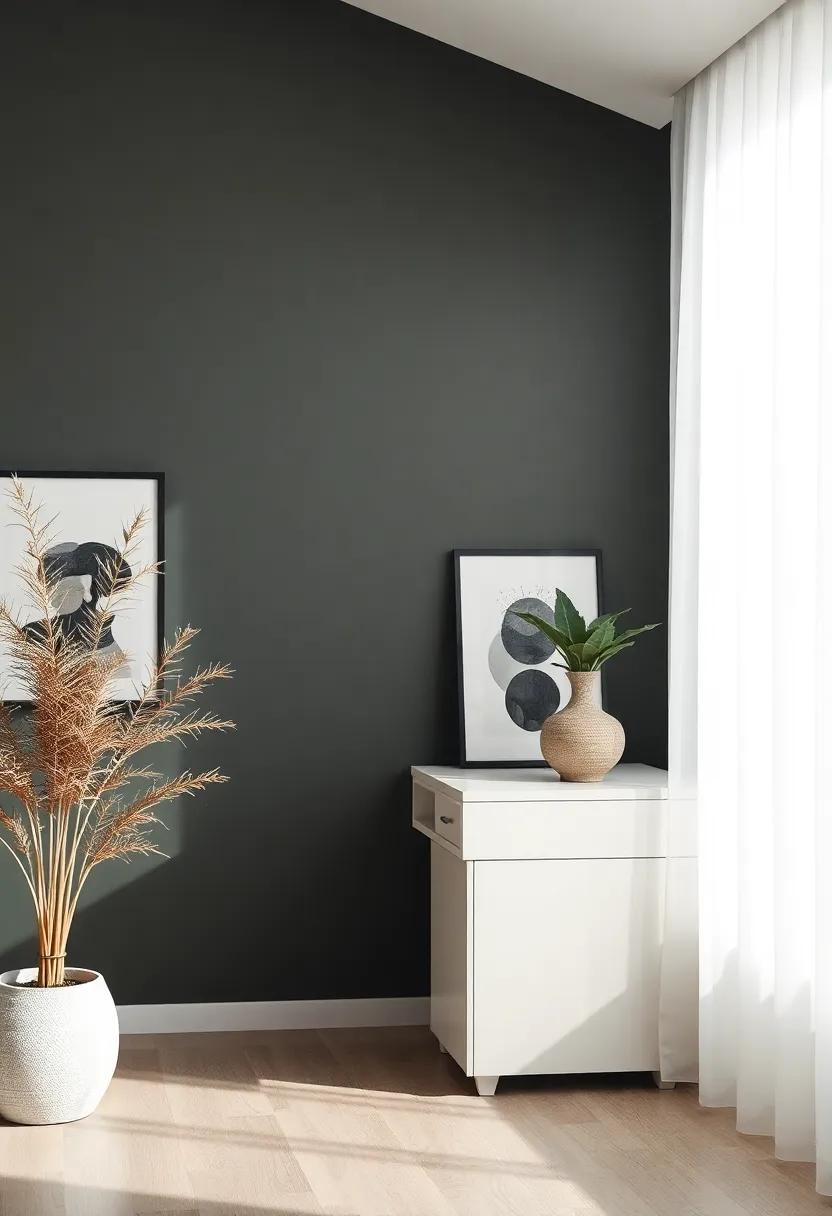
Transforming your workspace into a sanctuary involves selecting art and decor that resonates with your soul. Consider incorporating personalized items such as framed photographs or hand-painted canvas that evoke memories and emotions. Additionally, integrating natural elements like botanical prints or photographs of serene landscapes can promote a calming atmosphere conducive to focus and creativity. Choose colors that inspire tranquility and productivity, such as soothing blues, soft greens, or earthy tones, to create visual harmony.A cohesive color palette can elevate the overall aesthetic while ensuring that your workspace feels less like an office and more like a reflection of your unique personality.
To enhance the ambiance further, think about including decorative objects that hold significance. These may include mementos from travels, gifts from loved ones, or even artistic pieces from local artisans that tell a story. Arrange these elements mindfully on shelves or desk spaces to create a sense of intentionality. Implementing a few key design principles, such as balance and symmetry in the arrangement of your decor, can make a real difference. Here’s a simple table to illustrate how combining different decor styles can create a cohesive and tranquil workspace:
| Element | Style | Effect |
|---|---|---|
| Succulent plants | Minimalist | Brings nature indoors |
| Zen garden | Traditional | Promotes mindfulness |
| Artistic wall clock | Modern | Enhances time management |
For more inspiration on incorporating meaningful decor into your workspace, visit Apartment Therapy.
Creating a Boundary Between Work and Relaxation for Mental Clarity
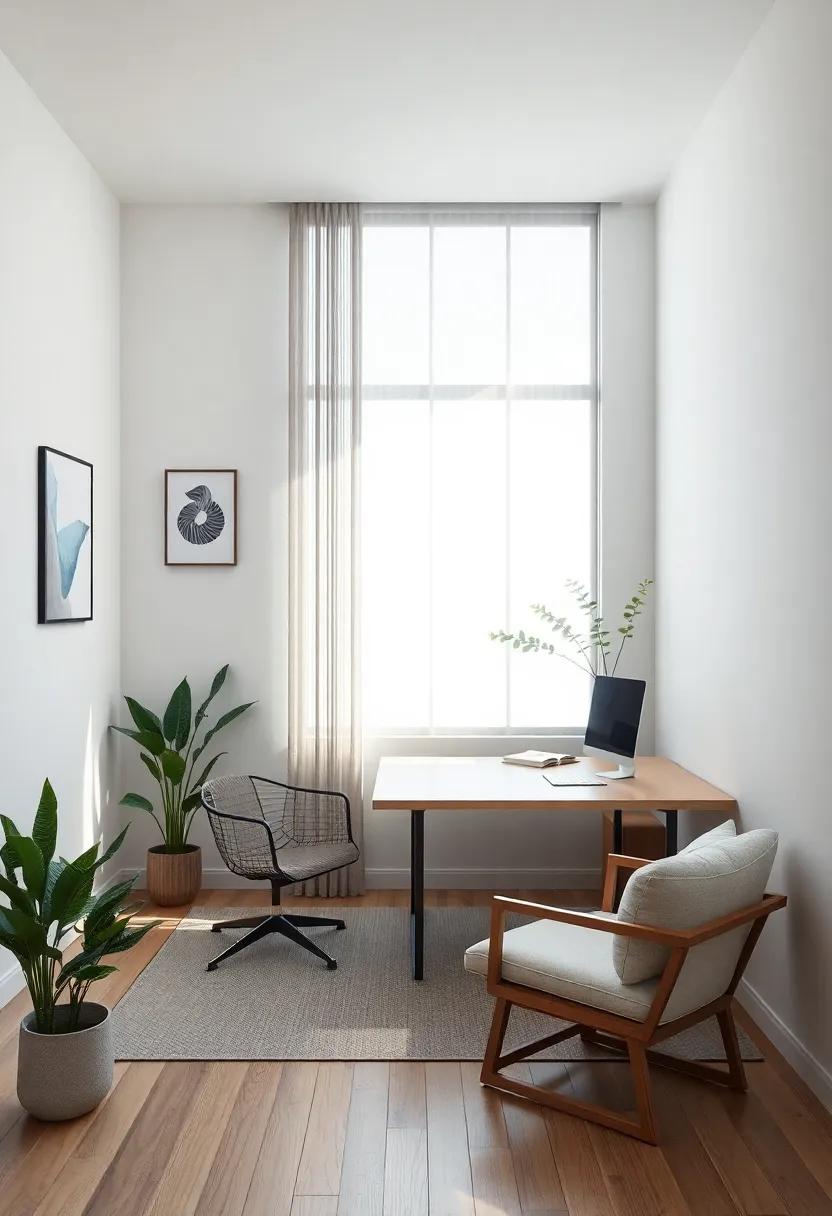
Creating a distinct separation between work and relaxation is crucial for maintaining mental clarity and a sense of well-being. One effective method is to design your workspace to encourage focus and productivity while establishing physical cues that signal the end of the workday.Consider incorporating elements like a designated work zone, complete with ergonomic furniture and soothing color palettes, which can help to reinforce the boundaries you want to create. Additionally, utilizing natural materials, such as wood and plants, can foster a grounding atmosphere that invites relaxation when your off the clock.
To further enhance this boundary, establish rituals that demarcate the end of your work hours.These practices can include shutting down your computer, engaging in a brief meditation session, or even taking a walk outside. By creating a routine that signifies the transition from work mode to relaxation, you signal your brain to shift its focus. You might also consider setting up a relaxation corner, with cozy seating and calming decor. This space could serve as a sanctuary for unwinding after a busy day, allowing you to recharge mentally and emotionally.
- Incorporate calming scents: Use essential oils or candles to promote relaxation.
- Use soft lighting: Soft, ambient lighting can definitely help create a tranquil environment.
- Personalize your space: Add personal touches that make your office feel welcoming and inspiring.
| Relaxation Techniques | Duration | Benefits |
|---|---|---|
| Meditation | 5-10 mins | Reduces stress and enhances focus |
| Deep Breathing | 3-5 mins | Promotes relaxation and lowers anxiety |
| yoga stretches | 10-15 mins | improves adaptability and relieves tension |
For a deeper dive into creating a more balanced work-life routine, visit Healthline for useful tips and insights.
Utilizing Aromatherapy to elevate Your Home Office Experience
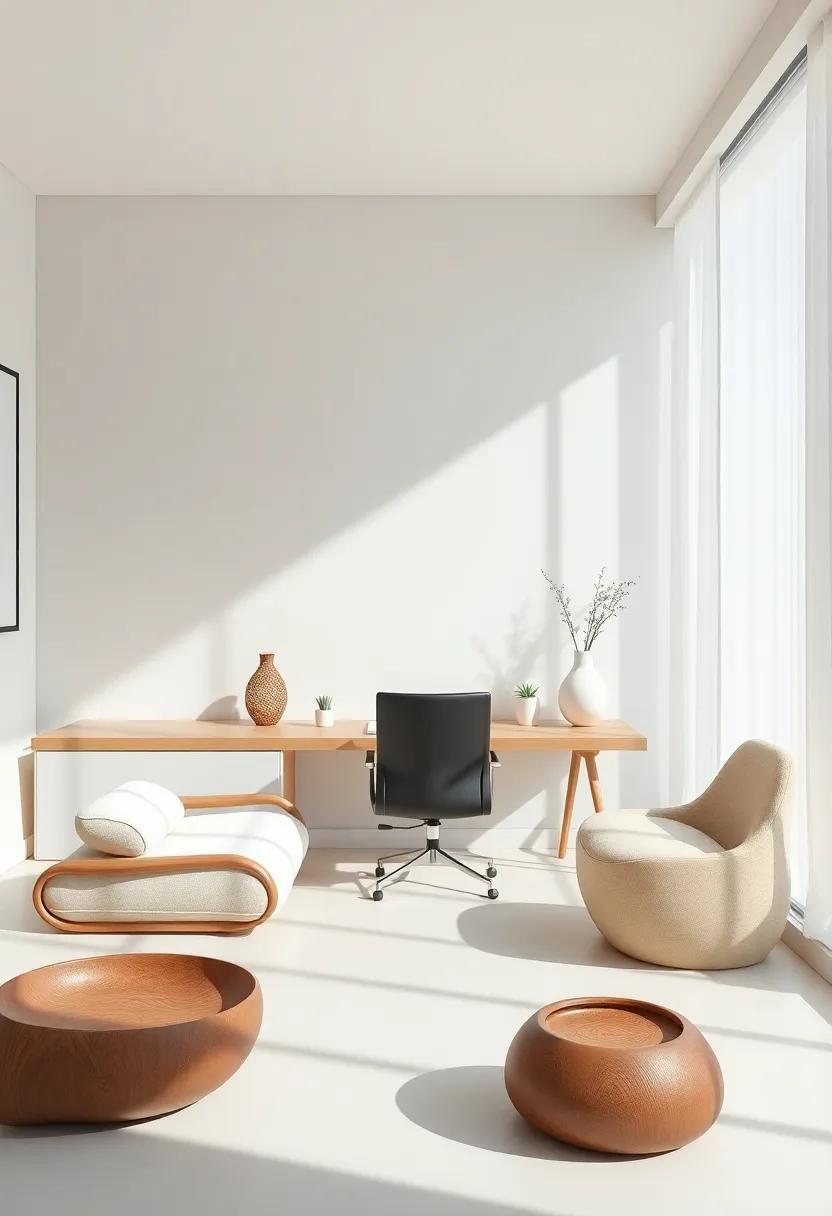
Transforming your home office into a paradise of serenity can be achieved through the thoughtful use of aromatherapy. Essential oils,known for their therapeutic properties,can elevate your mood,boost your concentration,and create a harmonious atmosphere. Here are a few essential oils to consider incorporating into your workspace:
- Lavender: Renowned for its calming effects,it can help reduce anxiety and promote relaxation.
- Peppermint: This invigorating scent can enhance focus and mental clarity, perfect for tackling complex tasks.
- Lemon: Bright and uplifting, it can definitely help improve mood and create a cheerful ambiance.
- Eucalyptus: Known for its refreshing properties,it can promote alertness and clear-mindedness.
To utilize these aromas effectively,consider creating an essential oil blend tailored to your workspace needs. You may use a diffuser to disperse the scent gently throughout the room, or place a few drops on cotton balls near your workstation for a more subtle effect. For a visual reference, here’s a simple table illustrating how to mix your oils for maximum benefit:
| essential Oil | Purpose | Suggested Mix Ratio |
|---|---|---|
| Lavender | Calming | 3 drops |
| Peppermint | Invigorating | 2 drops |
| Lemon | Uplifting | 2 drops |
| Eucalyptus | Refreshing | 1 drop |
For more insights on aromatherapy and its benefits, visit Healthline. By incorporating these natural fragrances into your workspace, you can create not only a productive environment but also a personal sanctuary that nurtures both your mind and spirit.
Establishing a Harmonious Flow with Thoughtful Layout and Arrangement
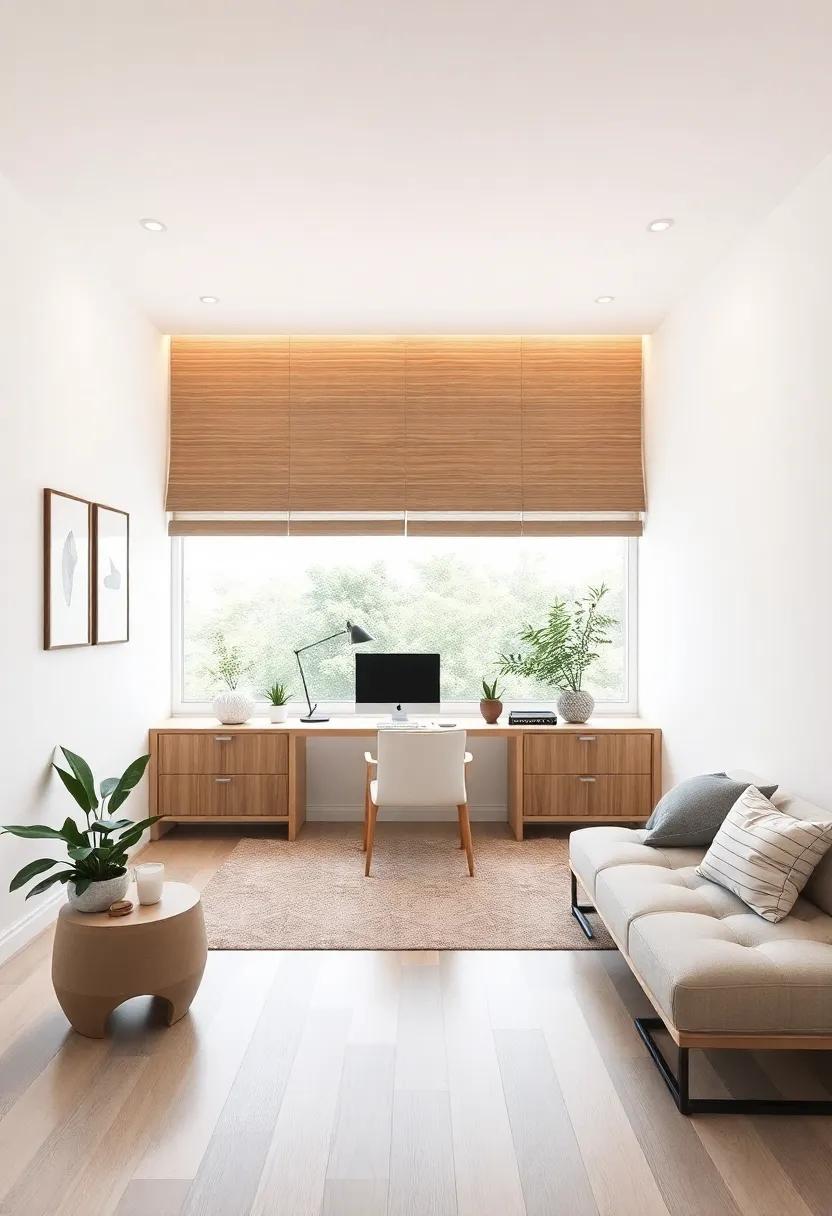
To cultivate a serene atmosphere, the arrangement of your workspace plays a pivotal role in enhancing focus and fostering creativity. Begin by prioritizing functionality while ensuring an unobtrusive flow throughout the area. Consider using a Z-shaped layout that promotes effortless movement between essential work zones, or adopt a circular design that invites collaboration and creativity. Ensure that your desk is positioned to take advantage of natural light, while also incorporating plants and artwork that complement the space’s aesthetics, drawing inspiration from nature.
Alongside the layout, the careful selection of furniture and decor is imperative in establishing a tranquil environment.Opt for minimalist furniture that aligns seamlessly with your design vision, and use textures that promote comfort and calmness. Create distinct zones for different activities, such as designated areas for brainstorming or relaxation, incorporating elements like soft seating or meditation corners. Enrich your workspace further by integrating sound-absorbing materials, which can definitely help in maintaining peace and reducing distractions, enhancing the overall experience. For more tips on enhancing productivity, visit Healthline.
Exploring Light and Shadow: Designing with Windows and Intention
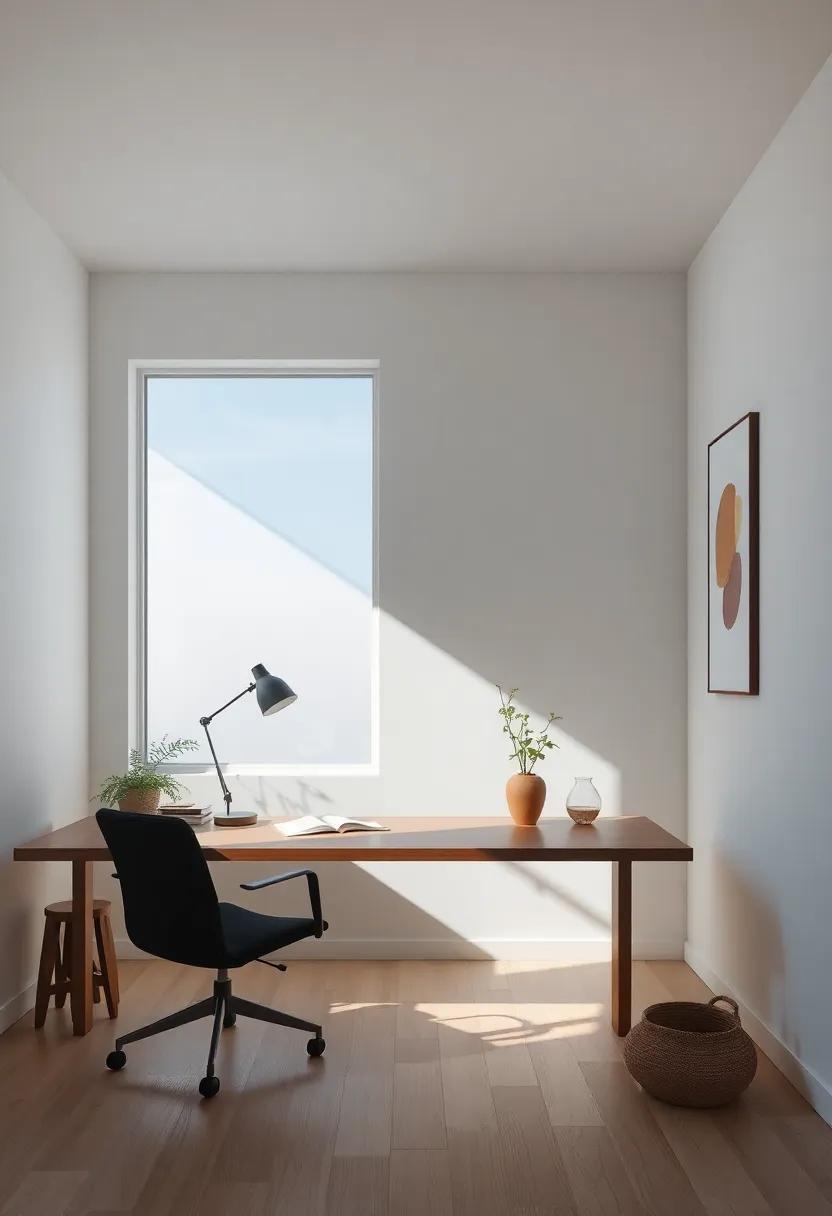
Designing a tranquil workspace involves a mindful approach to light and shadow,emphasizing how natural sunlight and thoughtfully placed windows can transform your home office. Maximizing natural light not only energizes the space but also enhances productivity and mood. Positioning your desk near a window allows you to harness this light while ensuring that glare on screens is minimized. Consider using sheer curtains to diffuse harsh sunlight,creating a gentle illumination that fosters calmness and focus.Additionally, think about the strategic placement of mirrors; they can reflect natural light deeper into the room, amplifying a serene atmosphere while visually expanding the space.
Shadows also play a crucial role in establishing a balanced and warm environment. By incorporating features that cast soft shadows—like plants, decorative elements, or carved wooden screens—you can add depth and texture to your workspace.Key considerations for shadow design include:
- using adjustable blinds to control light intensity throughout the day.
- Opting for a desk lamp with a warm bulb to provide gentle illumination during evening hours.
- Choosing furniture with rounded edges to soften the light and shadow contrast.
By embracing both light and shadow, your home office can become an oasis of tranquility, allowing you to cultivate creativity and mindfulness in your daily work. For more inspiration on creating harmonious workspaces, you might find ideas at Architectural Digest.
Creating a Cozy Reading Nook as an Escape from Work Demands
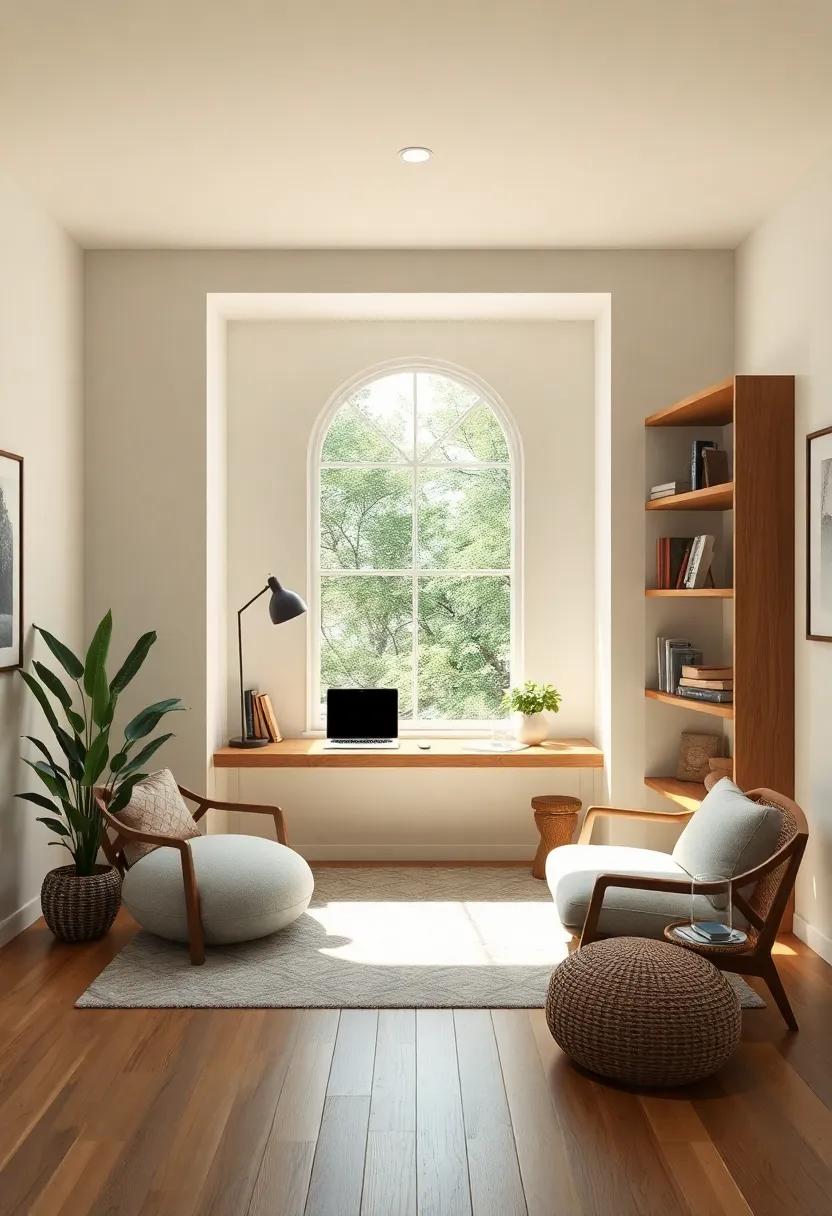
When the pressures of work begin to weigh heavily, having a dedicated space to retreat with a good book can be a game changer.Imagine a cozy nook nestled in the corner of your home office, designed to whisk you away into new worlds. Start by choosing a comfortable chair that invites you to sink in and relax. Incorporate soft lighting, such as a warm floor lamp or string lights, to create a calming atmosphere. To enhance the serenity, use a plush throw blanket and colorful cushions to add warmth and personality. Don’t forget to include a small side table for your favorite beverages and a spot for your latest reads.
To elevate the experience further, consider decorating your nook with elements that inspire tranquility and creativity. A small bookshelf can hold an array of novels and magazines, while an indoor plant or vase of fresh flowers brings life into the space. To tie everything together, think about adding a sound element; perhaps a white noise machine or soft instrumental music playing in the background. This way, you can unwind and disconnect from work demands without distraction. For more ideas on creating your reading retreat, explore resources at House Beautiful.
Establishing Rituals to Transition from work Mode to Relaxation
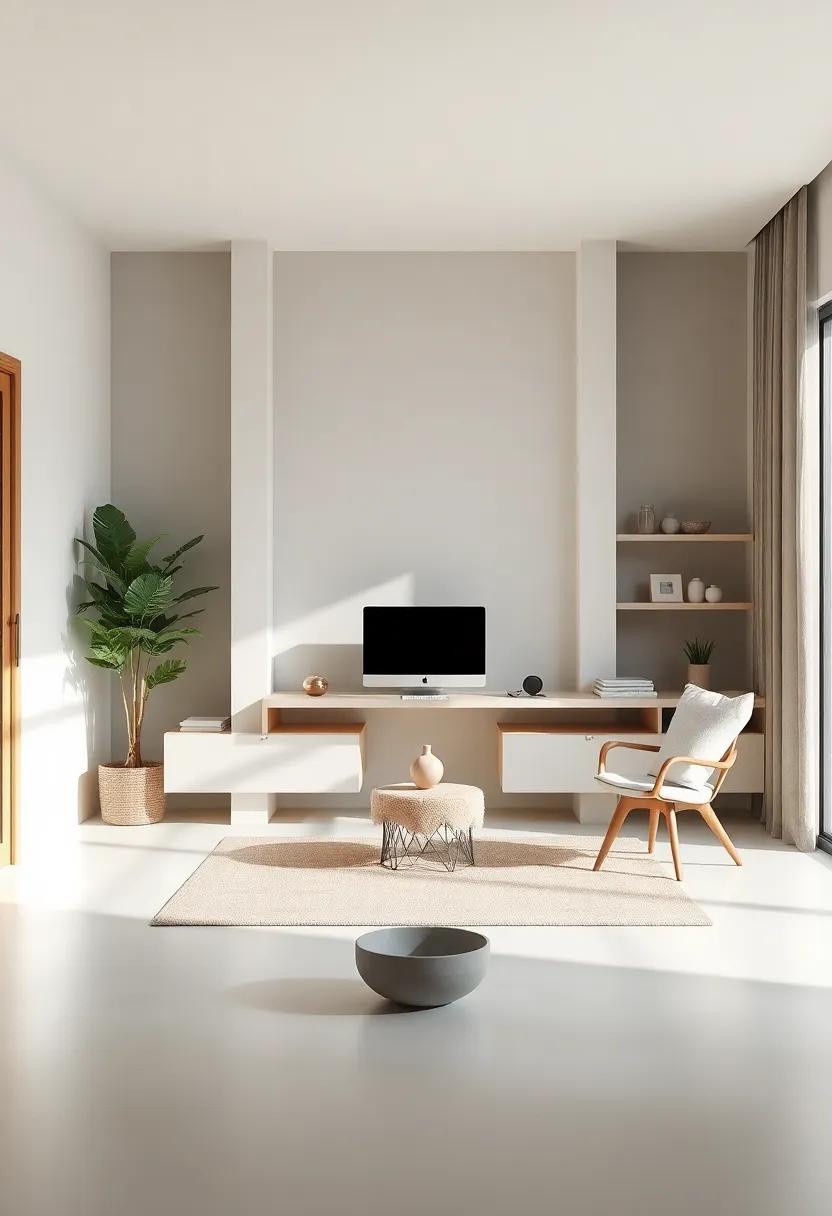
Transitioning from a frenetic workday to a state of relaxation can be a challenge, especially when your workspace doubles as your home sanctuary. To streamline this shift, consider establishing a series of personalized rituals that set the tone for leisure. These rituals can involve simple actions that signify the end of your work commitments and the embrace of rest, such as:
- Lighting a candle: Choose a scent that evokes calmness, helping to signal your brain that it’s time to unwind.
- Creating a closing routine: Allocate the last 10 minutes of your workday to tidy up your desk, reflect on your accomplishments, and set priorities for the next day.
- Engaging in mindfulness: Spend a few minutes meditating or practicing deep-breathing exercises to release work-related stress.
- Enjoying a transition beverage: Sip on herbal tea or your favorite drink as a comforting ritual that signifies your time to relax has begun.
Incorporating these elements not only helps mentally detach from work but can make your home feel like a balanced space. Additionally, you may consider implementing a technology shutdown; establish a specific time when devices related to work are turned off. This can foster an environment of tranquility that’s conducive to relaxation. For further insights on creating a serene atmosphere, explore mindbodygreen.com, where you can find resources and ideas for enhancing your wellness rituals.
Incorporating Mindful Furniture Choices for Comfort and Peace
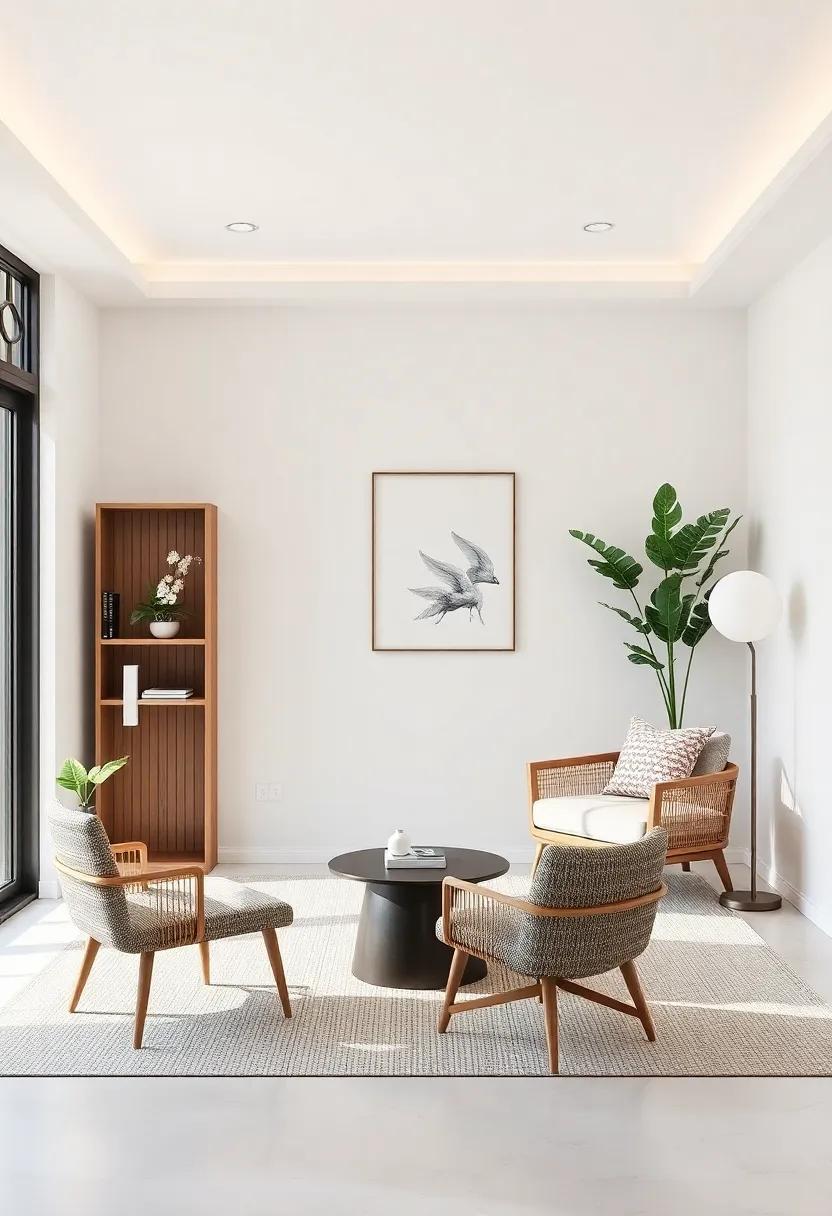
Creating a workspace that fosters tranquility requires thoughtful selection of furniture that aligns with both aesthetics and comfort. Natural materials such as wood, bamboo, or cork can create a soothing atmosphere while enhancing the overall design theme. Allowing elements of nature into your workspace through materials not only enriches the visual appeal but also supports emotional well-being. Incorporating ergonomic chairs and desks can promote better posture and productivity, reducing stress during long work hours. When choosing pieces, it’s vital to consider the following aspects:
- Color Palette: Opt for calming colors like soft greens, blues, or earthy tones.
- Design Simplicity: Choose minimalist designs that reduce visual clutter.
- Versatility: Select furniture that serves multiple functions to decrease the need for additional items.
Implementing these mindful choices can transform your home office into a serene haven. To make it even more inviting, consider accessorizing with plants, ensuring that they not only complement your furniture but also purify the air. A well-placed table or shelf can showcase your favorite potted greenery or essential decorative items, creating focal points that enhance the soothing ambiance. Here’s a simple overview of furniture types and their benefits:
| Furniture Type | Benefits |
|---|---|
| Ergonomic Chair | Promotes comfort and reduces strain. |
| Adjustable Desk | Encourages movement and flexibility. |
| Natural Wood Shelves | Enhances warmth and supports organization. |
For more inspiration on creating a peaceful workspace, check out Healthline.
Utilizing Soft Textiles to Encourage a Sense of warmth and Calm
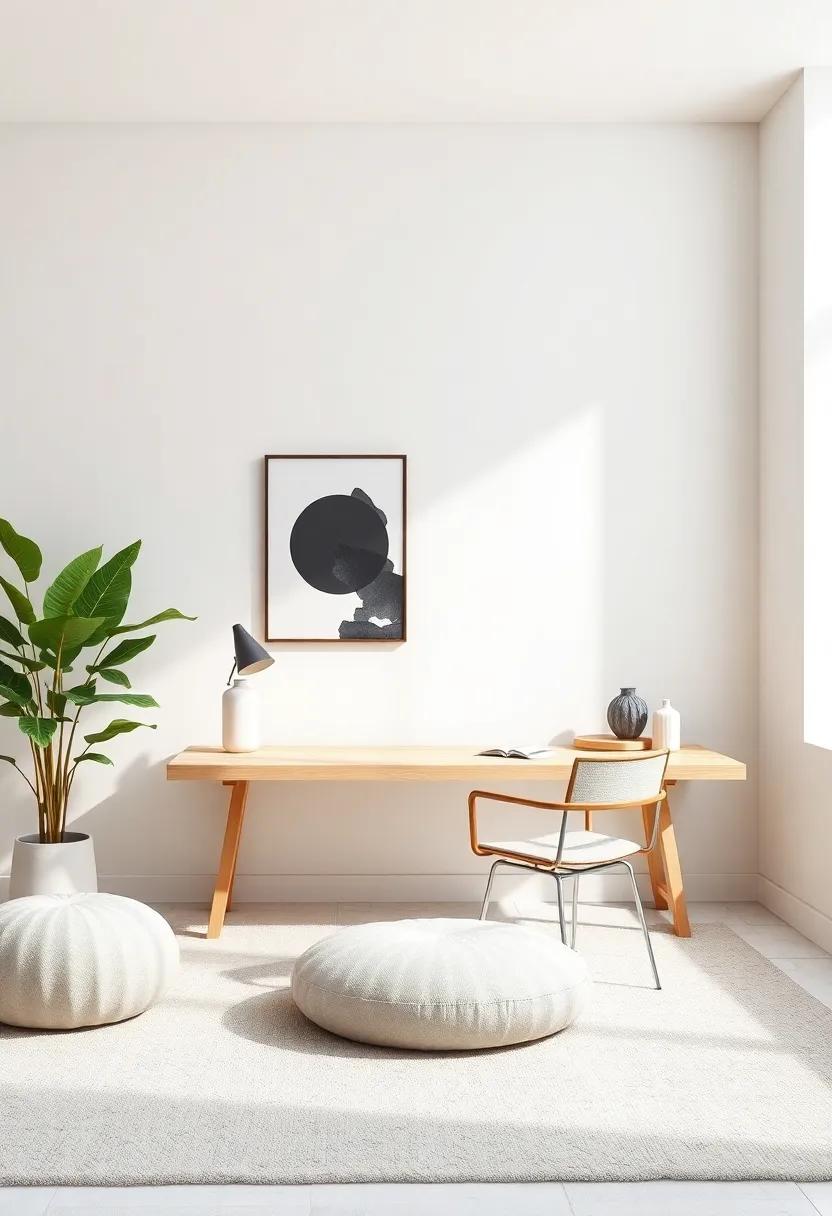
Integrating soft textiles into your workspace is an effective way to cultivate a soothing environment.Consider incorporating materials like cotton, linen, and fleece into your décor to evoke a sense of comfort and serenity. These fabrics can be seamlessly implemented through:
- Throw pillows: Add a pop of softness to your chair or sofa.
- Cozy blankets: Drape them over your workspace to create a sanctuary for both relaxation and focus.
- Rug layering: Use plush rugs to not only define your workspace but also to bring warmth underfoot.
By choosing a palette of muted and earthy tones for these textiles, you can enhance the calmness of your workspace further. A well-designed mix of colors can echo the tranquility of nature, promoting enhanced concentration. Consider using:
| Textile Item | Color Palette |
|---|---|
| Throw Blanket | Soft Beige,Sage Green |
| pillows | Muted Gray,Dusty Rose |
| Area Rug | Natural Jute,ivory |
By utilizing these tactile elements in your Zen home office,you facilitate a deeper connection with your space,promoting feelings of warmth and calm. enhancing your workspace with thoughtfully chosen soft textiles can significantly contribute to achieving your perfect work-life balance. For more insights on creating tranquil spaces, visit EMI.
Fostering a Sense of community with Collaborative Spaces
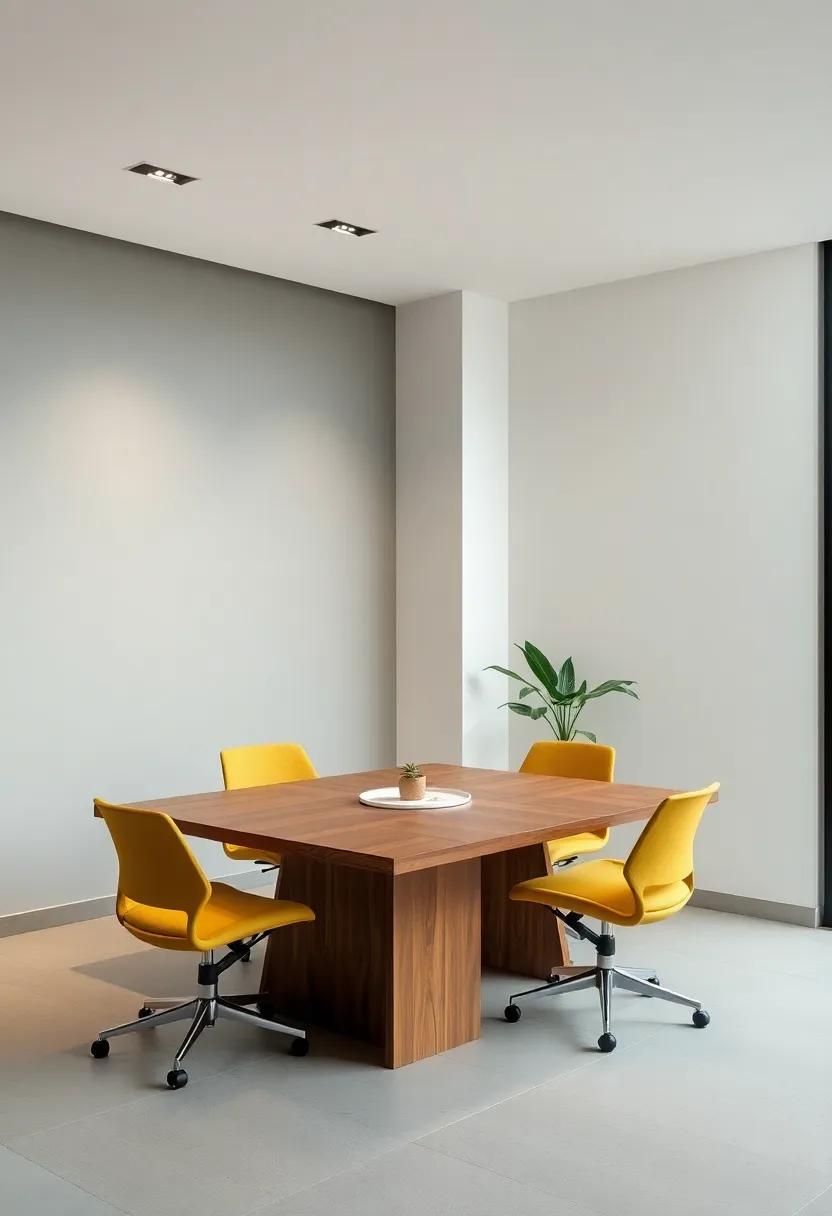
Collaborative spaces are essential for nurturing a strong sense of community, especially in a world where remote work is becoming the norm. By incorporating comfortable seating arrangements, shared resources, and open layouts, home offices can transform into hubs of creativity and connection. Consider implementing features such as:
- Flexible Workstations: Encourage movement and interaction by providing adjustable desks and seating options.
- Shared Objectives: Designate areas for group brainstorming or team meetings, promoting collaboration on projects.
- Community Boards: utilize bulletin boards to share ideas, achievements, or even simply notes of encouragement among colleagues.
Beyond physical spaces, cultivating an atmosphere of camaraderie can also be achieved with digital solutions. Utilizing dialog platforms fosters real-time engagement and allows for seamless collaboration, no matter where individuals are located. A dedicated group chat or regular video calls can help maintain interpersonal relationships, ensuring team members feel connected. To improve this virtual interaction, consider utilizing tools like:
| Platform | Features |
|---|---|
| Slack | Channel-based communication, file sharing, and integrations. |
| Trello | Project management, task tracking, and collaborative boards. |
| Zoom | High-quality video calls, screen sharing, and breakout rooms. |
By thoughtfully designing your workspace and creating channels for connection, you can foster a vibrant community that supports productivity and well-being. For more insights on designing your ideal workspace, visit Houzz.
Enhancing Focus with Thoughtful Organization Strategies in Your Workspace
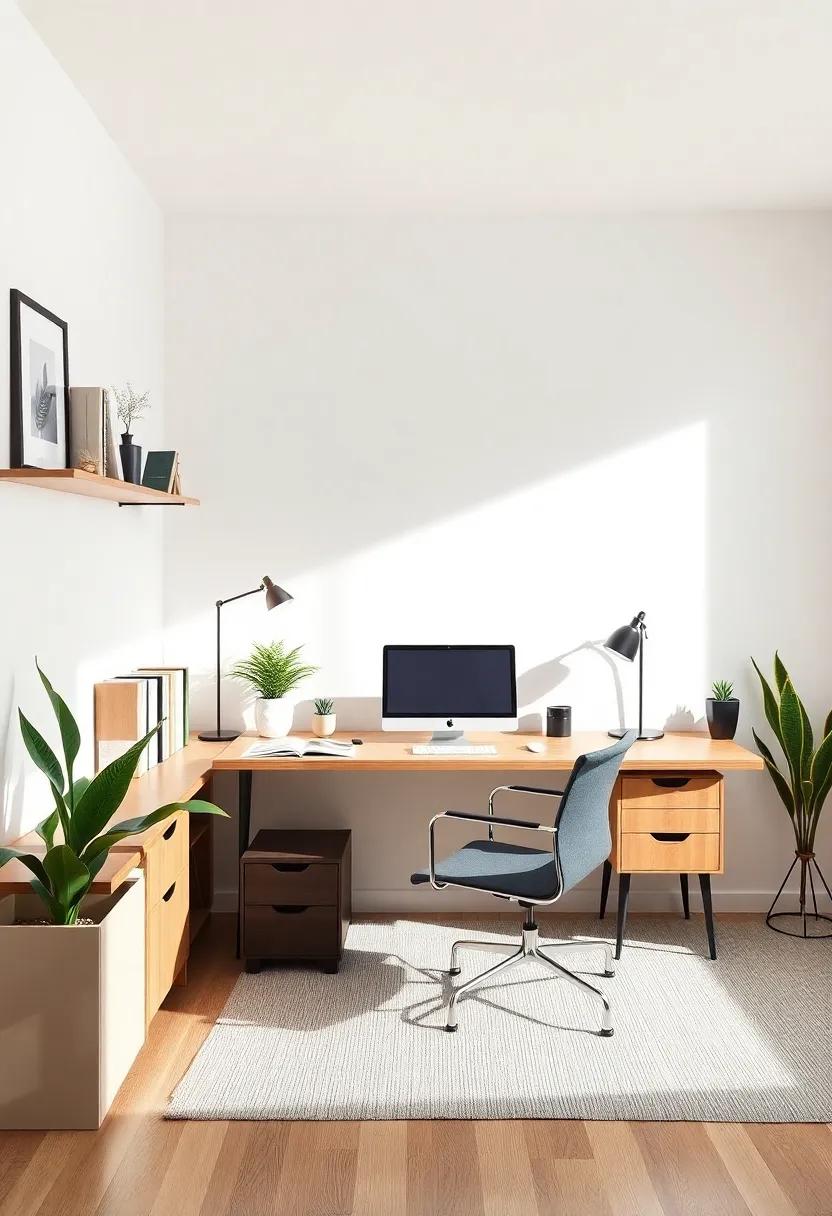
Creating a harmonious environment in your workspace is essential for boosting productivity and enhancing focus. Begin by removing distractions that can lead to scattered thoughts. A minimalist approach can work wonders; consider keeping only essential items on your desk. Use organizational tools such as file organizers, cable management systems, and desk trays to prevent clutter from accumulating.By defining dedicated areas for specific tasks, such as a reading nook or a creative corner, you create a natural flow that keeps your mind centered on the task at hand.
Moreover, incorporating natural elements can significantly contribute to a tranquil workspace. Organize your desk with indoor plants, which not only act as beautiful decor but also improve air quality and reduce stress levels. Use color-coding for files and documents to ease navigation and retrieval. A well-structured workspace enhances cognitive clarity, so consider implementing the following strategies:
- Digital Organization: Streamline your electronic files and folders.
- Proper Lighting: Invest in adjustable lighting that suits different tasks.
- Aromatherapy: Integrate essential oils or diffusers for calming scents.
To visualize your organized space, you can create a simple checklist for your workspace items:
| Item | Status |
|---|---|
| Desk Organizer | ✔ |
| indoor Plant | ✔ |
| Aromatherapy Diffuser | ✘ |
For more tips on maintaining focus through organization, check out Zen Habits.
The Way Forward
As we conclude our journey through the art of zen home office design,it’s essential to remember that creating a tranquil workspace is not merely about aesthetic choices; it’s about fostering an environment that nurtures focus,creativity,and a sense of well-being. By integrating elements of nature, embracing simplicity, and prioritizing functionality, you can cultivate a sanctuary that inspires productivity while soothing the mind.
Transforming your home office into a peaceful retreat is a process of intentionality and exploration. Each time you rearrange a piece or introduce a new element, you’re not just altering a physical space; you’re creating a reflection of your inner world. Allow your workspace to evolve alongside you, adapting to your changing needs and preferences.
In this fast-paced age, where distractions abound, your home office can serve as a haven of calm—a space where ideas flourish and stress diminishes. Embrace the journey of personalizing your workspace, and let it become a canvas for mindfulness amid the daily hustle. As you design your tranquil retreat,may you find a balance that not only enhances your work but also enriches your life.
As an Amazon Associate I earn from qualifying purchases.



